What is a key distinction between Azure Firewall and FortiGate VM in terms of their primary functions?
What characterizes the branch-to-branch topology in an Azure virtual WAN?
Which output was taken on a VM running in Azure?
A)
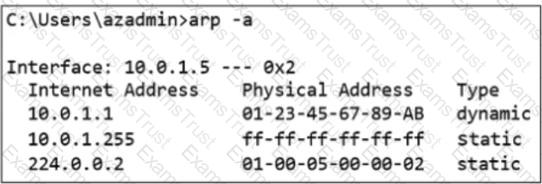
B)
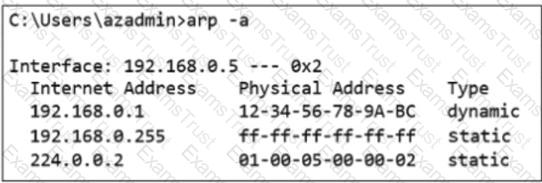
C)
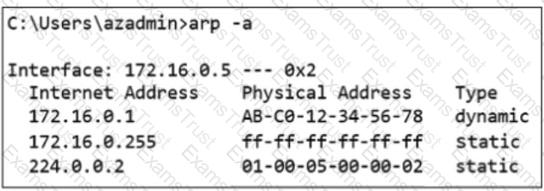
D)
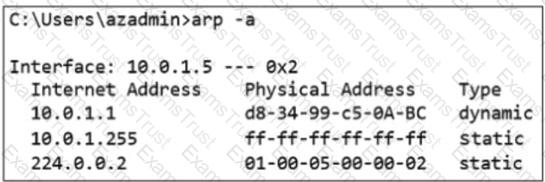
Your organization is planning to deploy FortiWeb in Azure to provide a web application security solution to its web servers. One of the requirements is to have granular control of the number of vCPUs and memory assigned to this resource.
Which cloud model could meet this requirement?
What is the primary purpose of enabling the IP forwarding setting on FortiGate in Azure?
Refer to the exhibits.
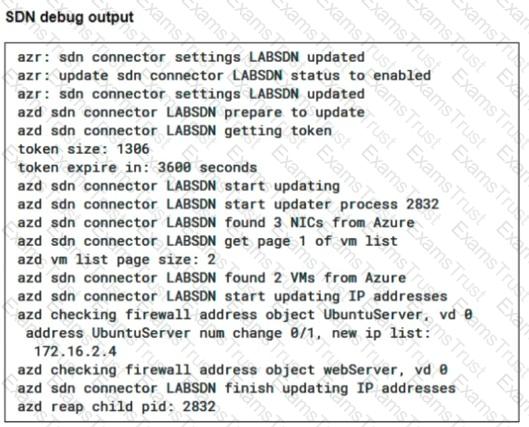
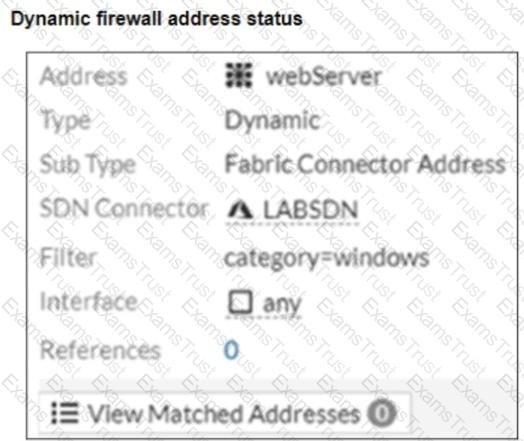
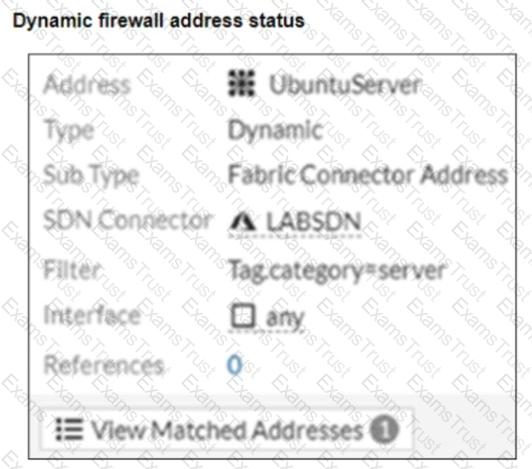
Two new dynamic firewall addresses have been configured on the FortiGate VM using the external connector to Integrate within the same Azure environment.
The debug output shows that one IP address can be resolved successfully, but the second is empty.
Which steps could you perform to correct the misconfiguration? (Choose all that apply.)
You deployed a FortiGate active-active with ELB/ILB solution using the template from Azure Marketplace.
What is the purpose of the inbound NAT rules configured in the external load balancer in this deployment?
What is a requirement when you deploy a FortiGate active-active cluster in Azure?
When you deploy a single FortiGate VM using the available template from the Azure Marketplace, several other resources are also created.
Which two resources, among others, are created during the process? (Choose two.)
After integrating a FortiGate VM with Azure Route Server, you detect that routes are not propagating successfully.
What initial step could you perform to diagnose the root cause?